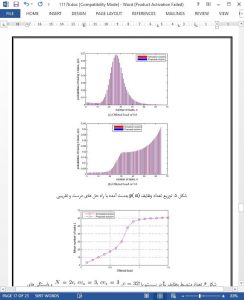Abstract
Cloud providers need to size their systems to determine the right amount of resources to allocate as a function of customer's needs so as to meet their SLAs (Service Level Agreement), while at the same time minimizing their costs and energy use. Queueing theory based tools are a natural choice when dealing with performance aspects of the QoS (Quality of Service) part of the SLA and forecasting resource utilization. The characteristics of a cloud center lead to a queueing system with multiple servers (nodes) in which there is potentially a very large number of servers and both the arrival and service process can exhibit high variability. We propose to use a G/G/c-like model to represent a cloud system and assess expected performance indices. Given the potentially high number of servers in a cloud system, we present an efficient, fast and easy-to-implement approximate solution. We have extensively validated our approximation against discrete-event simulation for several QoS performance metrics such as task response time and blocking probability with excellent results. We apply our approach to examples of system sizing and our examples clearly demonstrate the importance of taking into account the variability of the tasks arrivals and thus expose the risk of under- or over-provisioning if one relies on a model with Poisson assumptions.
1 INTRODUCTION
CLOUD-BASED services have become ubiquitous and permeate our every-day life. Unlike the traditional approach where companies rely on their own computing, storage and network resources to handle the user’s demands, cloud computing provides their users with ondemand services that are accessed over a network (most often Internet) [DIK09, ARM10, XU12]. SaaS (Software as a Service) environments, in which software is hosted centrally in a cloud, is a case in point, and has become a standard model for a number of business and multimedia applications. Other approaches to cloud computing include IaaS (Infrastructure as a Service) and PaaS (Platform as a Service). In either case, the cloud architecture offers many advantages including economies of scale, fast deployment of new features, quick bug fixes and potential cost-saving through the “pay-as-you-go” model.
6 CONCLUSION
In this paper we argue the importance of performance evaluation tools to properly size a cloud system so as to meet performance aspects of the SLA, as well as minimize the amount resources the cloud provider needs to provision to meet the agreed upon QoS levels. Due to the variability of cloud workloads, we propose to use a G/G/c-like model to represent a cloud-based system and compute expected performance indices. The advantage of such a model is that it represents general distributions of workloads in the cloud system with respect to both the arrival and service patterns.











